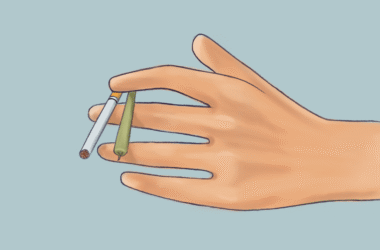Content warning: Self-injury
Nonsuicidal self-injury (NSSI) remains an urgent and often overlooked mental health concern, and one that demands greater attention from universities worldwide. As many as 44 per cent of those who engage in NSSI in adolescence continue to do so when they start university, and eight per cent of all university students report engaging in NSSI behaviours in the past year.
The transition from secondary education to university represents a critical period of academic pressure, personal exploration, and increased social opportunities. During this timeframe, students face a heightened risk for mental disorders. Researchers have suggested that body regard—how one perceives, lives in, and cares for one’s body—plays a pivotal role in NSSI engagement.
In a recent publication in the Journal of Affective Disorders, Julia Petrovic, a recent PhD graduate of McGill’s Educational Psychology program and current post-doctoral fellow at Harvard University, explored binary gender differences in the domains of body regard and NSSI. Petrovic hopes that the results of her research can guide the types of resources and support institutions provide.
“The McGill community is very diverse, and so should be the mental health resources that are made available to its students,” Petrovic said in an interview with The Tribune. “It is my hope that my research eventually informs the way that student services at universities will respond to students’ mental health challenges.”
Petrovic’s study investigated four body regard domains—body acceptance, athleticism, body care, and body connection—among students reporting NSSI over the past year. Using a quantitative approach, her study examined 3,343 college students, with 12.7 per cent reporting NSSI history in the past year. Of this 12.7 per cent, 82.4 per cent were women.
“We had a large sample with over 3,000 university students, so we can be confident in the results we found,” Petrovic said. “It was also the first study to explore body regard in its different domains, which really deepened our understanding of how aspects of body regard might contribute to the prediction of NSSI and how this differs by gender.”
Petrovic’s findings revealed that, on average, females were less accepting of their bodies and perceived themselves as less athletic relative to males. Furthermore, lower levels in the four domains of body regard were linked to a higher likelihood of self-injury in the last year among females, whereas in males, only lower levels in body care and body connection showed this effect. Despite these differences, both reported taking similarly good care of their bodies and felt similarly connected to them.
“We essentially found evidence that having a positive regard for one’s body played a protective role in relation to self-injury, as well as some nuances for gender,” Petrovic said.
Petrovic emphasized the importance of repeating the study with university students who report more diverse gender identities to achieve more inclusive and generalizable results.
“University students who did not identify with a binary gender were unfortunately excluded from our analyses because there were too few individuals to include in a statistically [significant] way,” she said.
Petrovic also noted that the levels of body regard domains in predicting NSSI should be explored through longitudinal research, which follows participants over a longer period of time.
“An important limitation is the study’s cross-sectional design, so our results are really a snapshot of how things are interrelated at a given moment,” she said.
Petrovic concluded by emphasizing the importance of moving away from a ‘one size fits all’ approach and tailoring interventions to more personalized strategies.
“Each individual’s history, whether they have lived experience of self-injury or unique ways in which they view themselves and their body, can impact what sort of mental health support would work best for them,” Petrovic explained. “The best we can do is try different strategies, like meditation, journaling, spending time in nature, exercising, talking to a friend or a mental health professional, so we could really find what works best for the individual.”









